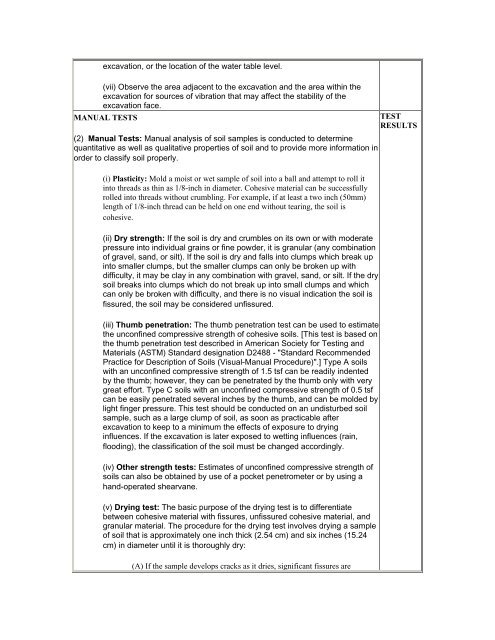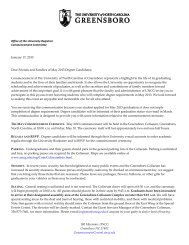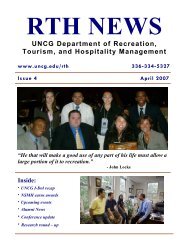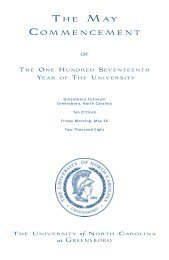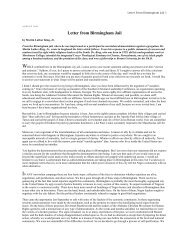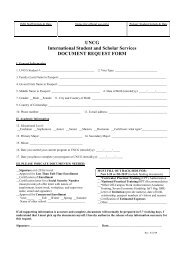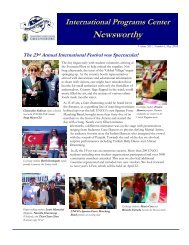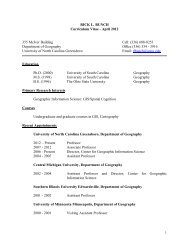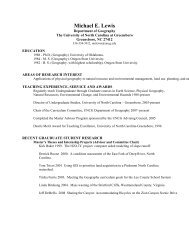Safety and Health Policy and Procedure Manual TRENCHING AND ...
Safety and Health Policy and Procedure Manual TRENCHING AND ...
Safety and Health Policy and Procedure Manual TRENCHING AND ...
Create successful ePaper yourself
Turn your PDF publications into a flip-book with our unique Google optimized e-Paper software.
excavation, or the location of the water table level.<br />
(vii) Observe the area adjacent to the excavation <strong>and</strong> the area within the<br />
excavation for sources of vibration that may affect the stability of the<br />
excavation face.<br />
MANUAL TESTS<br />
(2) <strong>Manual</strong> Tests: <strong>Manual</strong> analysis of soil samples is conducted to determine<br />
quantitative as well as qualitative properties of soil <strong>and</strong> to provide more information in<br />
order to classify soil properly.<br />
(i) Plasticity: Mold a moist or wet sample of soil into a ball <strong>and</strong> attempt to roll it<br />
into threads as thin as 1/8-inch in diameter. Cohesive material can be successfully<br />
rolled into threads without crumbling. For example, if at least a two inch (50mm)<br />
length of 1/8-inch thread can be held on one end without tearing, the soil is<br />
cohesive.<br />
TEST<br />
RESULTS<br />
(ii) Dry strength: If the soil is dry <strong>and</strong> crumbles on its own or with moderate<br />
pressure into individual grains or fine powder, it is granular (any combination<br />
of gravel, s<strong>and</strong>, or silt). If the soil is dry <strong>and</strong> falls into clumps which break up<br />
into smaller clumps, but the smaller clumps can only be broken up with<br />
difficulty, it may be clay in any combination with gravel, s<strong>and</strong>, or silt. If the dry<br />
soil breaks into clumps which do not break up into small clumps <strong>and</strong> which<br />
can only be broken with difficulty, <strong>and</strong> there is no visual indication the soil is<br />
fissured, the soil may be considered unfissured.<br />
(iii) Thumb penetration: The thumb penetration test can be used to estimate<br />
the unconfined compressive strength of cohesive soils. [This test is based on<br />
the thumb penetration test described in American Society for Testing <strong>and</strong><br />
Materials (ASTM) St<strong>and</strong>ard designation D2488 - "St<strong>and</strong>ard Recommended<br />
Practice for Description of Soils (Visual-<strong>Manual</strong> <strong>Procedure</strong>)".] Type A soils<br />
with an unconfined compressive strength of 1.5 tsf can be readily indented<br />
by the thumb; however, they can be penetrated by the thumb only with very<br />
great effort. Type C soils with an unconfined compressive strength of 0.5 tsf<br />
can be easily penetrated several inches by the thumb, <strong>and</strong> can be molded by<br />
light finger pressure. This test should be conducted on an undisturbed soil<br />
sample, such as a large clump of soil, as soon as practicable after<br />
excavation to keep to a minimum the effects of exposure to drying<br />
influences. If the excavation is later exposed to wetting influences (rain,<br />
flooding), the classification of the soil must be changed accordingly.<br />
(iv) Other strength tests: Estimates of unconfined compressive strength of<br />
soils can also be obtained by use of a pocket penetrometer or by using a<br />
h<strong>and</strong>-operated shearvane.<br />
(v) Drying test: The basic purpose of the drying test is to differentiate<br />
between cohesive material with fissures, unfissured cohesive material, <strong>and</strong><br />
granular material. The procedure for the drying test involves drying a sample<br />
of soil that is approximately one inch thick (2.54 cm) <strong>and</strong> six inches (15.24<br />
cm) in diameter until it is thoroughly dry:<br />
(A) If the sample develops cracks as it dries, significant fissures are


